In Search of Christopher Maclaine 13: The THE END Tour - A Work in Progress 11: CHRIS A
This is the 13th in a multipart series unofficially conjoined to the publication of Radical Light: Alternative Film & Video in the San Francisco Bay Area, 1945–2000, and the accompanying film series currently being presented by the Pacific Film Archive and San Francisco Cinematheque (in partnership with SFMOMA).
With my friend Brian Darr, proprietor of the great Bay Area cinephilia blog Hell on Frisco Bay, I’ve been scouting out the San Francisco locations used in Christopher Maclaine’s Masterpiece, THE END. What began as an attempt to identify and document what physically remains of the often mysterious places at which THE END was shot has evolved into a larger project to also analyze the film, and to identify all its many actors and extras, all of whom appear uncredited. To read the full version of these preliminary remarks, including info on how YOU can participate in this project, click here. For further information on Maclaine, check out the intro, which serves as this series’s hub. For the previous post of this Tour, click here.
NEW FEATURE: a YouTube of the CHRIS episode is viewable here.
NOTE: portions of Maclaine’s Voice-Over narration are transcribed in italicized sections. The images, for the most part, are stills documenting many (but by no means all) of THE END‘s shots. Those unfamiliar with this film will probably want to watch the video clip found above first, before making their way through the (hopefully enjoyable) notes and explication.
1) We now plunge into THE END‘s final narrative of an alienated and desperate male in the San Francisco of the early 1950s.
2) As the episode proper begins, we hear what could be more of the random-seeming noises (such as car honks) picked up by Maclaine’s recording apparatus as he recorded his Voice-Over narration, and heard sporadically throughout his film, but which are suggestive to me, at this point, of the sounds of film editing and/or sound equipment in action. Along with these sounds, we hear Beethoven’s Symphony No. 9, beginning from roughly two-and-a-half minutes into the final movement (Presto), which will prove a major element of this section of the film. My copy of the 12th edition of Gramophone’s Classical Good CD Guide describes the 9th aptly: “Beethoven celebrates both the breadth and power of man’s conception of his position in relation to the Universe; his sense of spirituality … In the finale, the essential life-enhancing optimism emerges, which makes human existence philosophically possible against all odds.”
In the first shot of the episode, the camera looks up into the original rotunda of Bernard Maybeck‘s Palace of Fine Arts, which was built for the 1915 Panama-Pacific International Exposition (one can see a panoramic view of the Palace circa 1919 via this link by scrolling down). The Palace might be described as a work of Symbolist architecture, meant to evoke, in Maybeck’s words, “an old Roman ruin, away from civilization, which two thousand years before was the center of action, and full of life, and now partly overgrown with bushes and trees — such ruins give the mind a sense of sadness.” The underside of the rotunda’s dome was inset with eight large murals by Robert Reid, four of which allegorically depicted the Arts: “The Birth of European Art,” “Oriental Art,” “Ideals in Art,” and “Inspiration of All Arts.” “The entire scheme — the Conception and Birth of Art, its commitment to the Earth, its progress and acceptance by the human intellect — is expressed in the four major panels,” Reid described. The other panels symbolized the “Four Golds of California”: the golden poppy, wheat, citrus fruits, and the metal itself. As these murals no longer exist as part of the current version of the Palace, I haven’t yet been able to figure out which of them is the one found in the center of the Maclaine/Belson composition, but currently my vote is for “Inspiration,” or the poppy. Here is a photo of Reid at work on his murals.
3) Maclaine cuts to an overexposed shot from inside a car about to enter the Broadway Tunnel from the North Beach side. The tunnel opened in 1952, the same year we presume production began on THE END.
4) Here I’ve tweaked the still shown in #3, above, to draw out some of the latent color.
5) A recent photo taken from a position a bit further back and to the left of the one in the screen captures immediately above. The entryway to the tunnel has long since been topped by the Chinatown Public Health Center. Groundbreaking on the center (known as District Health Center #4 until being renamed in ’94) occurred in 1969, and it began operations in ’71.
6) The shot previously seen in picture #3, above, continued — we enter the tunnel. The most famous entering of a tunnel sequence in cinema won’t come until six years later, with the 1959 release of Alfred Hitchcock’s NORTH BY NORTHWEST. At the end of that later masterpiece, Cary Grant and Eva Marie Saint share a private cabin on a train. In the last shot, the train enters a tunnel, a coy metaphor for their coitus. Similarly, in this shot of THE END, Maclaine gives us the metaphorical perspective of a sperm entering the vaginal cavity.
7) But Maclaine has further metaphorical uses for the tunnel: an exiting of a tunnel now switches the symbology from sexual to that of birth, while a traversal from light through darkness, and again into light, represents a passage between realms, or levels of experience. With the section of his film Maclaine labels “5,” we are moving towards THE END‘s climax, and hopefully towards some manner of epiphany.
Ladies and gentlemen. We have asked you before to insert yourself into the cast.
8 ) As Maclaine refers to “insertion” in his Voice-Over narration, he in fact inserts himself into THE END‘s cast for the first time since the film’s introductory montage, portraying himself as a dejected spermatozoon or little boy.
9) Maclaine cuts to a shot of a house that will prove to be of some importance in the CHRIS episode. Similar to the approach he takes with the other architectural structures in this section of the film, Maclaine will treat this house like a female body in which his character aims to “insert” himself. Wilder Bentley II has identified this house as the one Maclaine lived in at the time of THE END‘s production, located on the east side of Franklin Street, near its intersection with Sutter, but now long since demolished or removed.
Now we ask you to write this story.
10) Maclaine examines a knife. Up to this point, the filmmaker has probably jam-packed his work with as many anti-illusionistic devices (such as multiple jump cuts, and the unaccounted-for intermingling of color and b&w) as had been deployed in any narrative film up ’til the time of its creation. Now, in inviting us in this episode to “write this story,” Maclaine introduces metafiction into a narrative already characterized by savage irony, dark humor, playfulness, and paranoia.
Did Maclaine invent postmodernism?
11) We are presented with images with which to make a story. In the first, a woman wearing a long skirt or dress walks over a sidewalk grate; this is a form of eroticism which had great currency in the 1950s: less than two years after THE END‘s premiere, Billy Wilder’s THE SEVEN YEAR ITCH would emblazon the image of Marilyn Monroe in a white dress, reveling in the blast of air received through a version of such a grate over a subway, within the national collective erotic imagination.
12) The razor-sharp knife Maclaine examined is deployed, hitting and sticking in its wooden target. As mentioned in the section of this Tour dedicated to the introductory montage of his film, Maclaine, according to Stan Brakhage, was an obsessed knife-thrower of great expertise.
Here …
13) Maclaine cuts back to the woman finishing her amble over the grate; by means of Eisenstein’s intellectual montage, he effects the intimation of a shocking image which will be taken up by radical feminists in the ’70s and ’80s: the phallus as a deadly cutting weapon. Eisenstein’s technique was formulated to engage a film’s audience in the creation of meaning, a cinematic version of “writing a story” in a viewer’s psyche, based on images rather than words. Was Maclaine familiar with Eisenstein? It’s quite possible — ROMANCE SENTIMENTALE was announced (along with “‘Death Day’, originally part of the footage for Eisenstein’s QUE VIVA MEXICO“) as being part of an Art in Cinema program in April ’47, while OCTOBER was apparently programmed by Art in Cinema for a show in May of 1950. Maclaine could also have read Eisenstein’s theoretical work — THE FILM SENSE and FILM FORM: ESSAYS IN FILM THEORY had been published in English translations in in 1942 and 1949, respectively.
… is a character.
14) Previous to this episode, Maclaine has presented us with four characters who function as analogues for various unfortunate and alienated aspects of his personality: Walter is the romantic loner; Charles, a shocking and criminal version of the sexual pervert so many men suspect themselves to be; John, the artist at odds with his medium and audience; and Paul, the sensitive, delicate fellow whose soul is too frail to allow the risk of self-exposure incurred by love. Now, in giving us an analogue not designated by name other than “A Character,” and by gifting him one of his own primary pastimes (one — knife-throwing — redolent with violence), and, as we will discover, making this “Character’s” major dramatic relationship and dilemma involve a person (or persons) unknown within his (that is, Maclaine’s) own house, Chris Maclaine seems to tear off the masks to address us directly, or at least in a far less varnished manner than almost anyone could have been used to in narrative fictional art as of 1953. But although this describes a part of what is going on at this point of THE END, there is something far more crafty at work here — after guiding us through engagement with his four previous despairing characters, whose psychodramas are explored, then dispensed with at dizzying speed, and now engaging us personally and directly, even crossing normal artist/audience and aesthetic boundaries to invite us to co-create the circumstances of this “Character’s” situation, Maclaine puts those of us who can identify with his characters and this work into a particular situation, achieved by the artist with great craft: we are ready to collaborate in the necessary emergence from pain and darkness, and to intuitively co-create, as much as experience, catharsis.
Catharsis, of course, is the classical aim of narrative/dramatic art, but in 1953 (and, I believe, to this day) it had rarely been achieved — or even attempted — in a work characterized by such deliberate modernist disjointedness. (Obviously, this is even more the case for works of postmodern disjointedness.) To invite his audience to become co-creators of their own catharses by means of a work of this nature was an incredibly challenging, radical act, akin, somewhat, to presenting a brilliant half-hour amalgamation of A STREETCAR NAMED DESIRE and James Joyce’s ULYSSES.
There is still the question of how frank a picture Maclaine offers of himself via this “Character” — we are certainly given only a few details by which to assess this. It would be difficult to figure out, at this late date, the truth of the matter, but from my first viewing of THE END, before even knowing for sure who played this “Character,” I felt the palpable spiritual force of Maclaine’s presence, as well as the profound visceral depths of his actions, such as the knife-throwing, as well as his evident connection to his environment, including his house (I gathered that he had some direct connection to this house, but this was only confirmed recently by Wilder Bentley). I believe that by means of these few, but key, authentic aspects of Maclaine’s Self, we are ushered into a thoroughly — and for the majority of Maclaine’s contemporary audience, distressingly — authentic experience.
15) An anima figure (probably the same one from the WALTER episode, and possibly also from CHARLES) walks in the distance on the Palace of Fine Arts grounds, then immediately disappears behind the column in the foreground. The column itself suffers from a hideous gap in its side, as if the “Character” from picture #9 had unleashed his blade on this curvaceous structure in some kind of Jack the Ripper frenzy. The woman and feminized building together constitute a striking image of the interior of our “Character’s” soul: he yearns for connection to it, but it suffers from hideous, and no doubt horrifically painful wounds.
This shot captures the Palace’s unfortunate condition in the early ’50s: Maybeck’s well-constructed building was nonetheless made largely from materials not intended to hold up decades past the nine-and-a-half months in 1915 of the Panama-Pacific International Exposition’s duration. Although the City had fallen in love with the structure, causing it to be saved from the wrecking crew, by 1953 only a relatively small amount of money had been invested over the years for upkeep, allowing it to suffer the depredations of weather and vandals. By 1964 funds were procured for a restoration, or rather, an as-accurate-as-possible recreation of the Palace in concrete, which was finally completed in 1967. Yes — our Palace of Fine Arts for the last 44 years has been a repro!
Here …
16) Maclaine’s arm reaches into the frame to yank his knife from the board.
… is the most beautiful music …
17) The first shot of several in the CHRIS episode which juxtapose black/gray pigeons with white. We had previously seen pigeons shortly into the tale of CHARLES.
By asserting that Beethoven’s Symphony No. 9 is “the most beautiful music,” Maclaine reinforces his invitation for us to co-create this narrative and its potential catharses. By agreeing with his assertion, we’re inserted into his authorial shoes: after all, in choosing music for a film sequence we’re creating, how can we refuse “the most beautiful”? The assertion also draws into the narration’s argument the common understanding of Beethoven’s symphony as not only a work of transcendent beauty, but also as a work of transcendent spirituality. Maclaine puts a Bertolt Brecht-style distancing technique to the service of potential ecstatic connection.
… on earth. Here …
18) An image similar to #2, above. We are presented with a shot looking up from another perspective at the Palace’s beautiful curves. From high-flown talk of the “most beautiful” and an image of birds (inevitably suggestive of flight), we are brought down to “earth,” and given a fixed, but nevertheless soaring gaze of the Palace that brings out its similarities to a Catholic church, and such a building’s evocation of the heavens, and a cosmic order presided over by a Heavenly Father. I’ve stressed Maclaine’s erotic treatment of the sequence’s featured manmade structures (Palace, tunnel, house), but from the beginning the artist arguably pays even more attention to their spiritual aspects. As mentioned in #7, a passage through a tunnel contains inherent spiritual symbolism, and Maclaine’s treatment of the house will eventually, as with the Palace from the start, bring out its church-like qualities.
… are some …
19) A mannequin in a shop’s window display. On the basis of the display’s mock-awning decor, this is clearly the same shop, and probably display, as that of the beautiful and sad mannequin seen in image 37 (scroll down) of the WALTER episode. This beautiful, somewhat aloof-seeming blonde is another of the anima figures that are a significant part of our “Character’s” world (as seen in #s 11/13, and 15, above). Does he find her glassed-in, impenetrable lifelessness frustrating?
… pictures.
20) Our “pictures” seem to be largely of subjects with which we are already familiar. This arm, in the type of composition we have already seen in the WALTER and CHARLES episodes, is likely the same one as in WALTER (or, at least, WALTER A). Is this writhing arm Maclaine’s? It certainly could be, to judge by physique. And does the reprise of these kinds of images from the earlier tales as the “pictures” in our “Character’s” story indicate their centrality to THE END‘s thematic? Perhaps they are clues we are building to climax?
What …
21) This briefly-glimpsed image gives us a view of the outside of the Palace’s rotunda. The sculpture at the top of the column is one of the many “weeping women” who lean onto the structure’s top, holding their faces in their hands. Ernest E. Burden, author of San Francisco’s Wildflower: The Palace of Fine Arts, writes: “The weeping women at the corners of the planting boxes were conceived, according to their sculptor, Ulric Ellerhusen, to express the melancholy of life without art. He intended that the figures should be partially shrouded by vines from the planting desired by Maybeck. This effect, not included in the original construction, was ultimately attained through time and neglect.”
… is happening?
22) With the shot seen in #21, immediately above, the pace of Maclaine’s editing temporarily picks up, at least for a good portion of his shots/cuts. The artist toys with us — this pace shift occurs just as we are being asked to figure out “what is happening” in “our” story. Here, a man in shadow (apparently Chris) throws a knife into the board.
23) A dejected Chris.
24) A guardedly earnest Chris.
25) Again with the white and black, pigeons, Chris! (As in 17, above.) What ARE you up to?
He is a good boy …
26) There are two shots of this “good boy” from this angle, intercut with the pigeons immediately above in #25. In the first, Chris rapidly leans over, and out of frame, almost as if bowing. In the second, which this still is from, Chris walks forward tentatively. Although obvious, it should be stated for form’s sake that this image, and that of 23, above, as well as others, and the description of Chris/”A Character” as “a good boy” draw out, emphasize, or instill this protagonist’s childlike qualities. These seem to have been a distinct aspect of Maclaine’s character. Brakhage (who knew him in the early ’60s), for one, described him as having emotionally “never really passed beyond the teens.” (Of course, Brakhage’s understanding of Maclaine’s emotional makeup may have been influenced by the latter’s heightened drug use in that period.) In any case, it is clear from these shots that Maclaine wished to represent at least one of his selves as an overgrown child.
Could the building behind Chris be his house, first seen in #9, above, and not seen again ’til the shot shown in #27, immediately below?
27) A still from an oddly shaky hand-held shot of Maclaine’s house. In researching what the address of this sadly long-departed house could have been, I stumbled upon the possibility that Maclaine’s residence might have been a legendary Beat-era artist studio/crash-pad known as “the Ghost House,” located at 1350 Franklin St. Rebecca Solnit, in her book Secret Exhibition: Six California Artists of the Cold War Era, depicts the Ghost House as “… a decrepit, cavernous Gothic-Victorian on Franklin at Sutter Street whose three floors of rooms were rented out as studios and illegally inhabited by young writers and artists. Philip Lamantia and Wally Hedrick both spent time in the Ghost House, and Hedrick recalls it as a hangout conveniently located between North Beach and the Fillmore, a place where Thelonius Monk or Miles Davis might drop in, where drugs and parties were common.” Wilder Bentley told Brian and me that Maclaine and Lamantia had been close, and we know there to be at least one other person known to Maclaine who lived in the Ghost House, Robert Duncan. Maclaine had published Duncan’s poem “Variations Upon Milton” in the first issue of CONTOUR (April, 1947). According to Duncan’s biographer, Lisa Jarnot, he moved into the Ghost House for most of 1951 upon becoming lovers with Jess, who had lived there at least since the year before. Research continues to discover if Maclaine’s residence might have overlapped with any of these major figures, and to determine whether, in fact, Maclaine’s house is the Ghost House in the first place. Stay tuned.
… but somehow we feel …
28) From a shot highly similar to #23, above, Maclaine cuts to this striking purplish image reflected in glass of one of the short-dark-haired anima figures (actress unidentified) scattered throughout THE END, beginning with the one seen in image #9 of the introductory montage. By announcing how “we feel,” he continues to draw us into complicity as co-creators of our “Character’s” story.
… that he is up to no good.
29) From 28, immediately above, we cut to yet another shot of the deadly-looking knife hitting its target. Is this a response to the friendly-seeming, somewhat motherly-type anima figure who scrutinizes him, perhaps joining with us in judging him to be “up to no good”?
30) Chris pauses for the briefest of moments in Franklin Street, then steps up onto the curb, and walks up to his house …
Someone has hurt him.
31) Chris walks up the stairs. The quoted line is actually heard over a murky shot of Chris pulling a knife from the board, then walking towards the camera. Who has hurt our “Character”/Chris? Was it a woman? Maclaine was married to a woman named Norma Smith in the late ’40s; the two had collaborated on CONTOUR. It would, of course, be absurd to propose that Smith, a woman about whom I’ve thus far discovered nothing, was this “someone,” but it does suggest to me a line of speculation: bohemian/artist types who engage in drug use, and brief marriages and other romantic relationships (as Chris was known to do), are bound to get their feelings hurt upon occasion. So, yes, maybe it was a woman.
But he has got his …
32) Is this man ready for action? This shot is one of many repeated images in this sequence, which also contains repetitions of various actions and gestures, such as Chris’s knife-throwing and approaches to the house. The obsessive, flirting with psychosis, has an internal repertoire of such cherished images, which both console and spur him or her along the mad path.
… ego back, finally …
33) We again see the writhing arm, last discussed in #20. In this instance, the hand is cut off from view, leaving only a fleshy, veiny, swollen cylinder. There’s no way around it: this image screams phallus. Appropriate, as a man’s phallus and “ego” are intimately intertwined.
… and he will assert himself …
34) In this conjoining of “ego” and phallus and talk of “self-assertion,” is Maclaine again referring to the “male complexes involving exertion of muscle and ego” ending in “metaphorical self-immolation” I discussed towards the end of the CHARLES episode, and again at the end of JOHN? The classic example of a film to deal with such material is TAXI DRIVER. In this image, as in the climax of that later great film, a solitary man skilled in the use of deadly weapons, and encumbered by a serious “woman problem,” approaches a house to “assert himself.”
… now.
35) He is ready …
This shot for me is one of the key indicators that Chris could indeed be standing before 1350 Franklin St.: to the end of the block from this point seems roughly the distance of a third of a typical street in that neighborhood, precisely where 1350 Franklin should be. Unfortunately, the address doesn’t currently exist: the relatively gigantic apartment/office-complex/monstrosity occupying that space for the past several decades has commercial addresses of 1340 and 1360, but where 1350 used to be, there’s only an entrance to a garage.
Click here for the next post, in which CHRIS climbs those stairs!
Click as indicated for the previous post of this Tour. Click as indicated for the intro to this series.
Click here for an interview with Stan Brakhage concerning Maclaine, circa 1986.
If you have any information or (nonpublic) feedback to contribute to the Tour, please click here.
SPECIAL THANKS: to SF Bay Guardian film critic Max Goldberg, who mentions the Tour amongst his “best of 2010” list for SF360! Brian also contributes to this roundup, btw, and discusses the Tour, but this probably doesn’t quite count in the same way — if he hadn’t, there might have been knife-play … Anyway, thanks, Max and Brian!

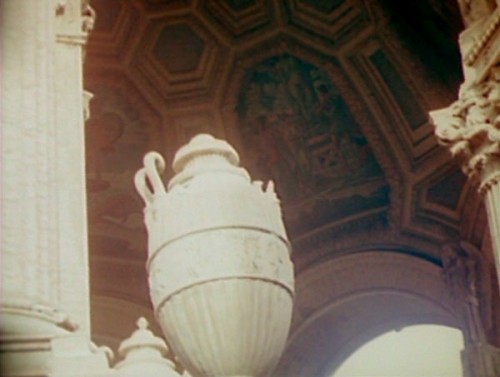
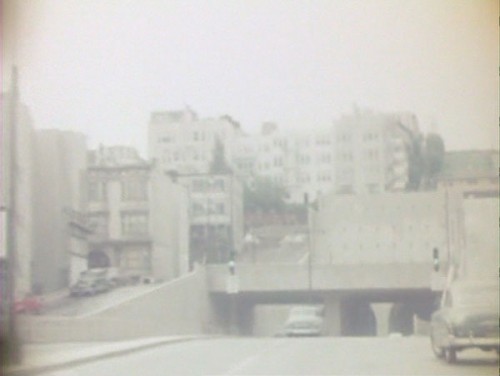
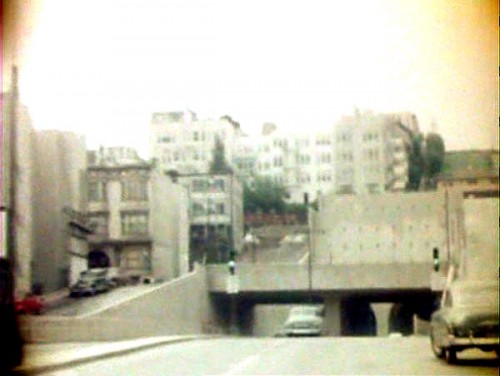
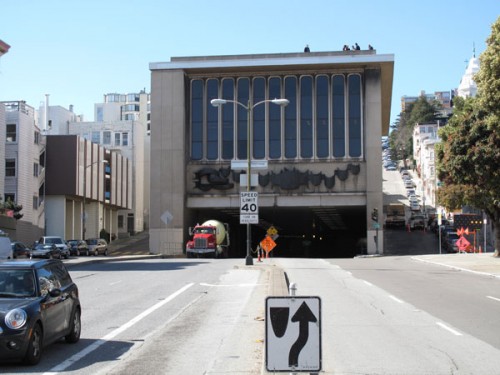
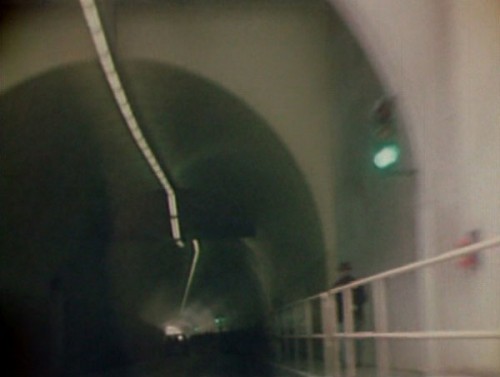
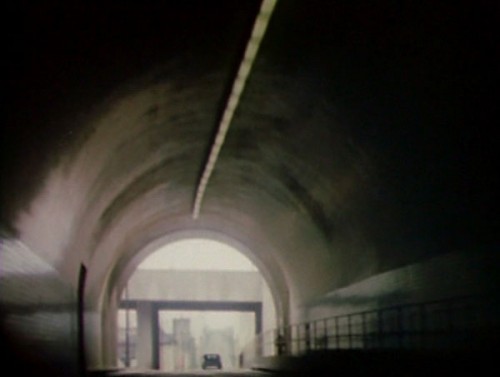
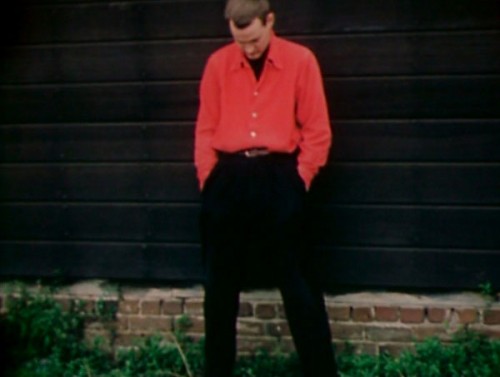
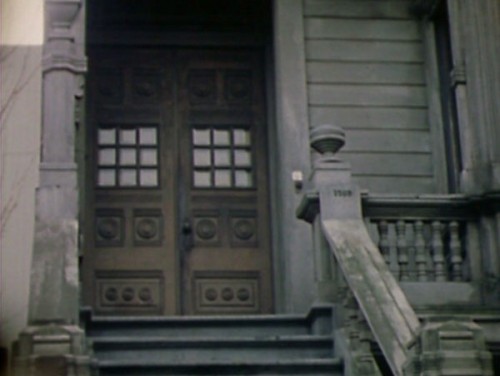
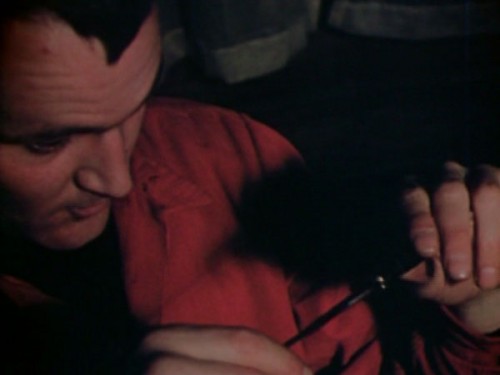
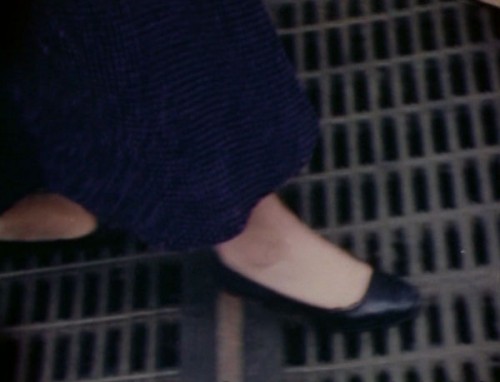
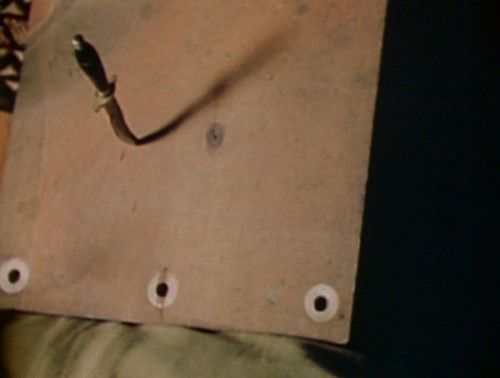
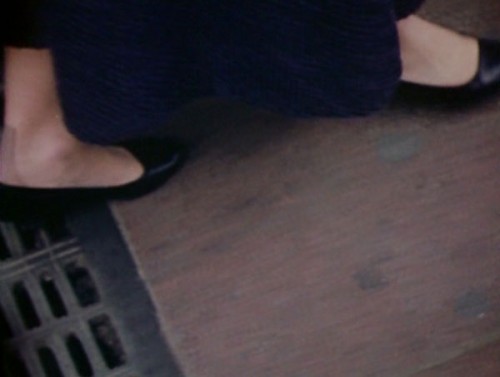
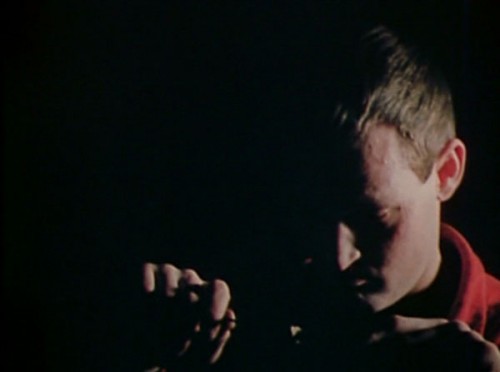
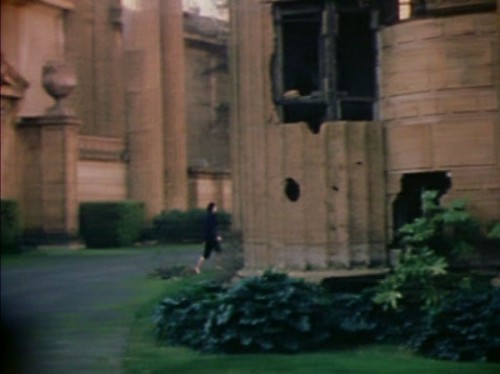
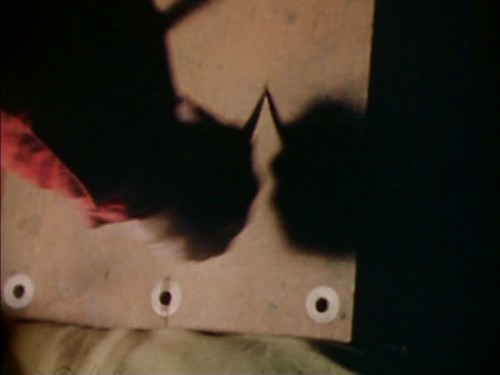
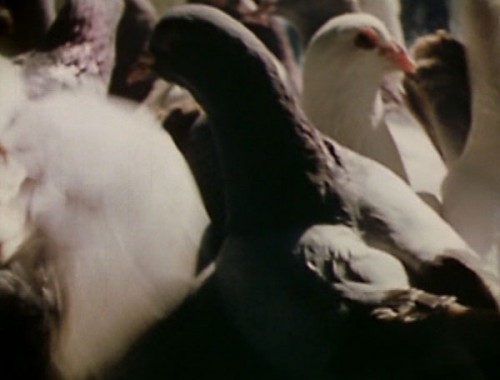
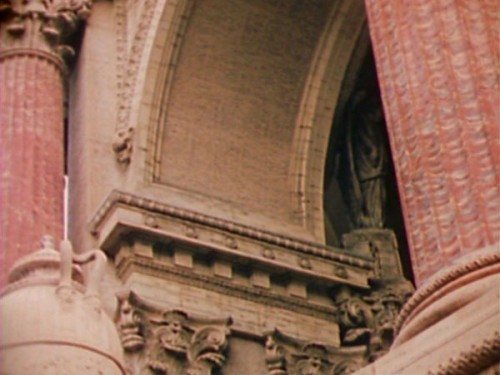
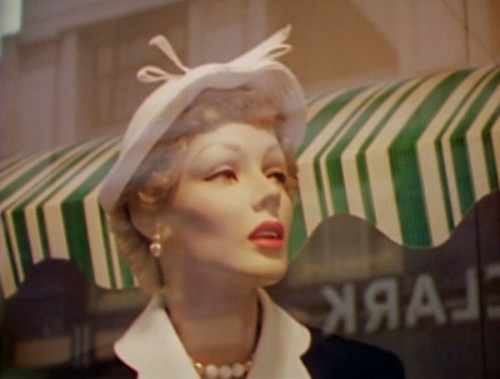
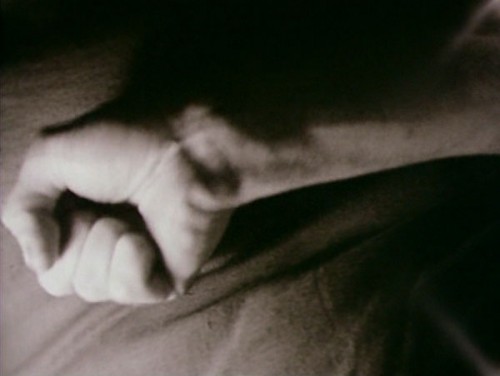
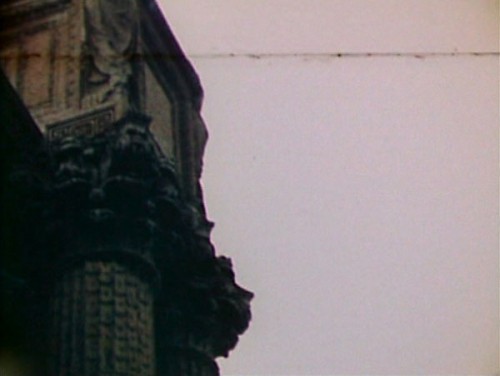
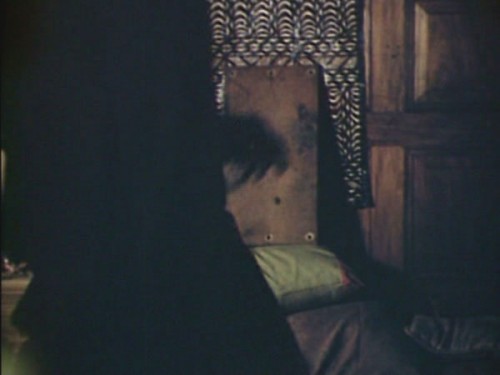
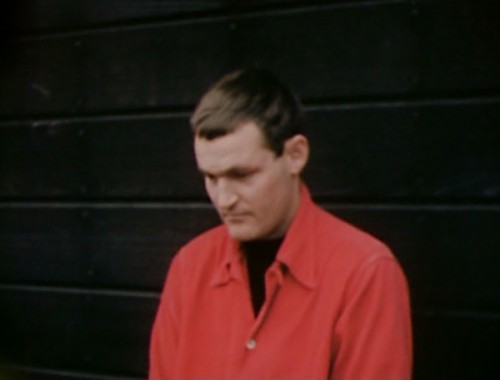
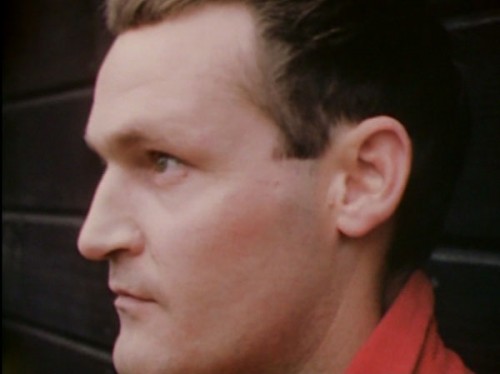
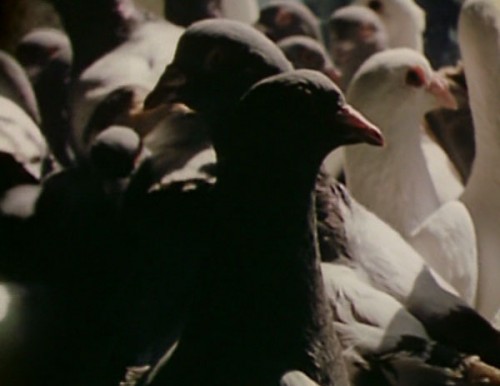
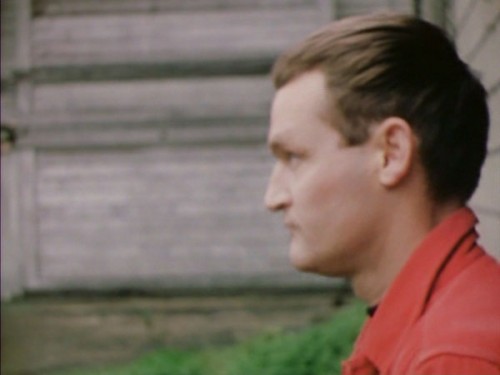
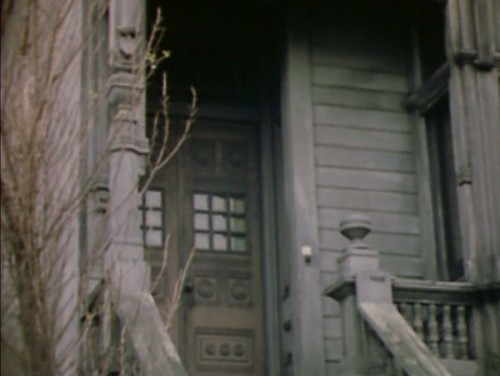
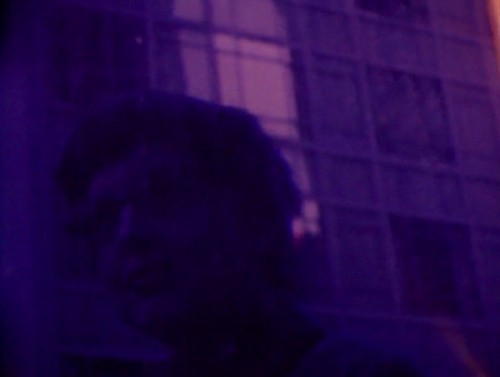
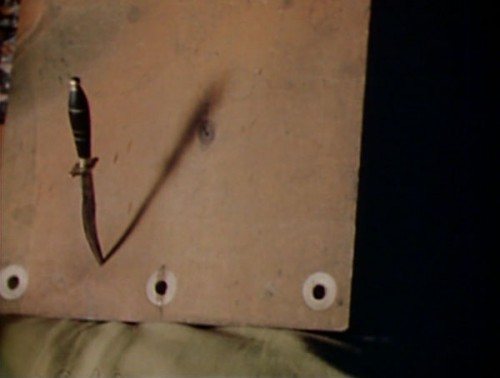
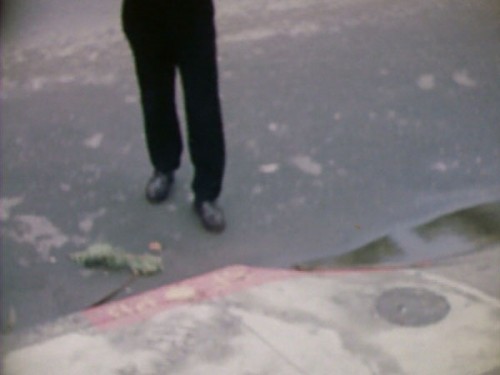
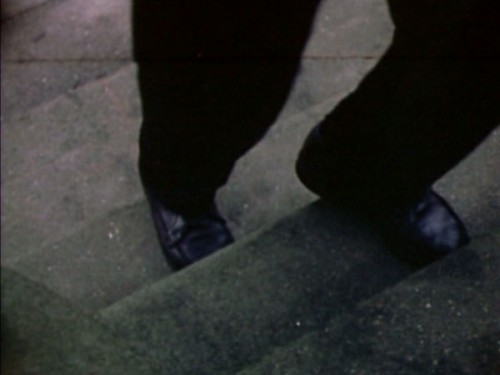
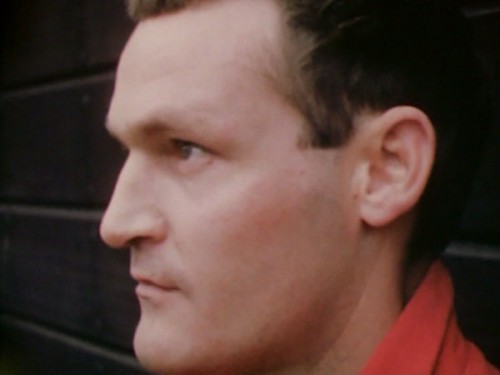
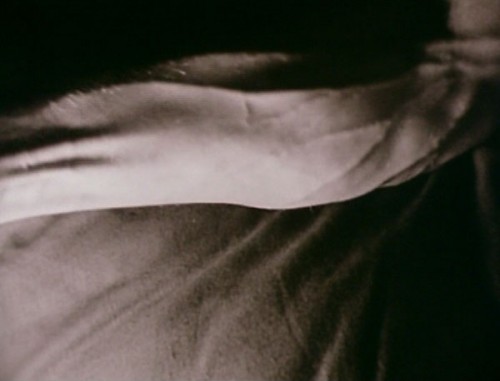
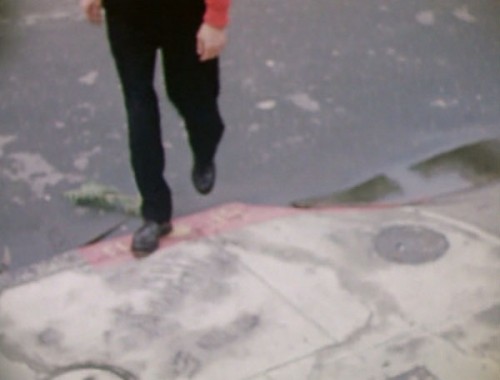
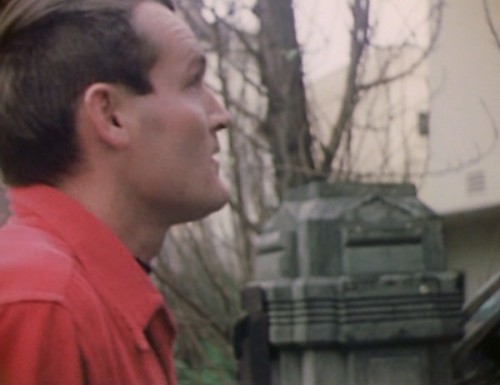
Comments (4)
Many thanks, Christian!
You bring up an important issue re. the writings. Some of us, indeed, have seen some of these, and I’d very much like to participate in bringing them into public view. Perhaps this could happen in some form on the web, although copyright issues could prove a thorny problem — this is a subject for future research. Even better would be a book of his collected writings, all of which, in terms of published work, could easily fit into one handsome little volume. However, until that happy day, check out “Fig.17” on this page:
http://writing.upenn.edu/library/images/semina/index.html
Yes, a Semina poem by one “Christofer Maclaine”!
Another great addition to the tour, Brecht. Funny the talk of nostalgia—especially from someone who has just left SF!—in regards to Maybeck and the Palace of Fine Arts, a structure purposefully designed to evoke nostalgia for a non-existent place/time.
I love the excavation of the fabled Ghost House. Speaking of, how does one get to read any of Maclaine’s writing? I’ve heard of the books (and of Contour), but as anyone actually seen, much less read? In light of this tour, it is feeling like a missing piece to the puzzle, a kind of invisible pole.
Steve Anker and Kathy Geritz are here presenting Radical Light in LA. The End played the other night at RedCat. I am already feeling the years passing…
Funny of you to mention THE MALTESE FALCON, Chris — the novel comes up in the next post. You’re referring to the movie, if I’m not mistaken? The sentiment still obtains, esp. re. many of the lost buildings (most esp. movie theaters! http://www.foundsf.org/index.php?title=Fox_Theater ) and much paved-over culture. There have been some disastrous redevelopments, as in the Western Addition, where I live, or south of Market — but it’s really amazing how much of the San Francisco of THE END‘s time is still with us. Every time I venture out into our streets, I encounter some of the most beautiful hand-crafted houses in the USA.
Also — in Maclaine’s time, the City had already undergone many transformations (esp., obviously, after ’06), with many beautiful buildings lost, and much Barbary Coast color transformed by appropriate progress. Whenever I get trapped in fantasy nostalgia for an SF I never could have known — as I am wont to do — I think of Gavin Ulster in VERTIGO, and shudder.
In the opening scenes of the Maltese Falcon, I recall that Sam Spade and his partner Miles Archer make a point of lamenting how much things have changed in San Francisco since the good old days. It’s a shame, they say.